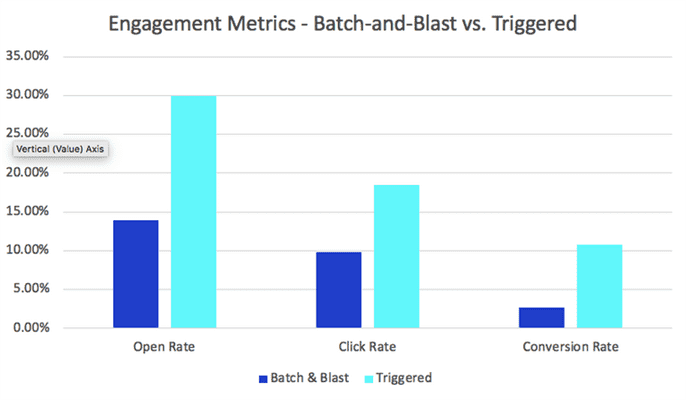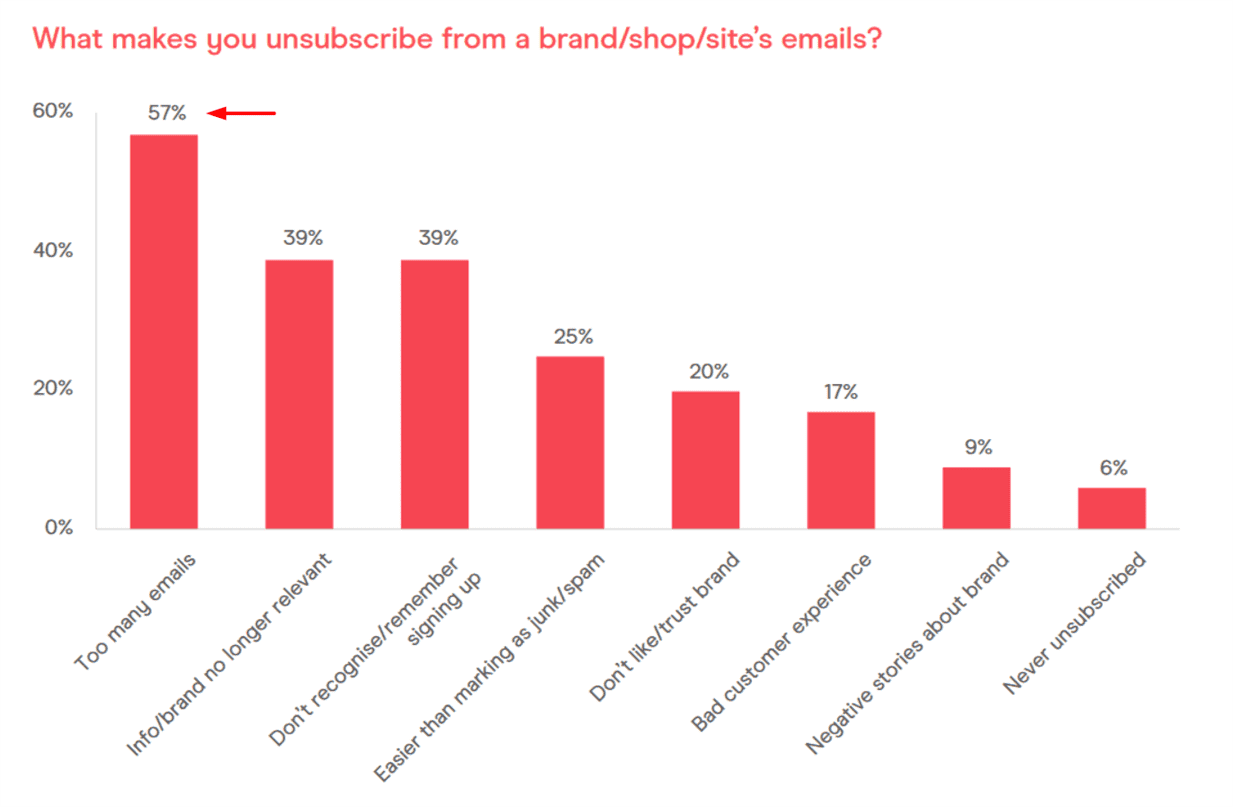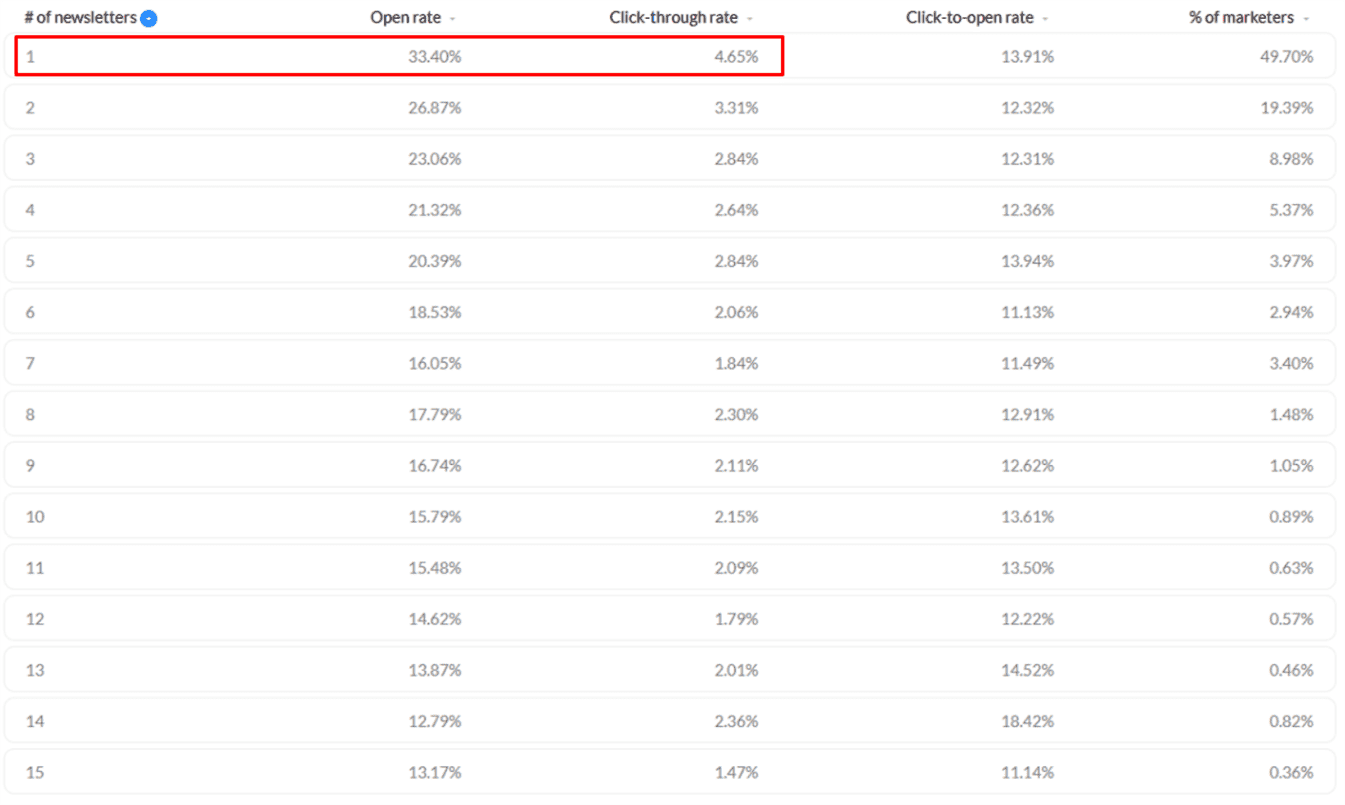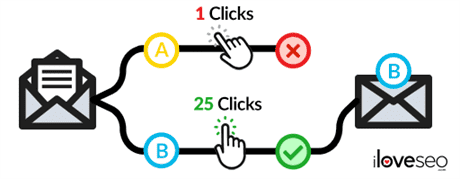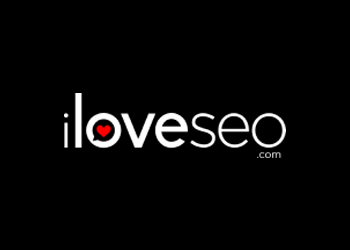Ever since the publication of the first newspaper (and likely well before), people’s interest in consuming new, curated and exclusive information has been insatiable. Whether via Twitter or word-of-mouth, we still can’t seem to get enough of it.
This doesn’t just benefit media outlets, though. High-quality email newsletters are a news source loved by recipients and marketers alike. Learning how to write a newsletter for your audience allows you to leverage readers’ penchant for fresh news to increase engagement, as well as nurture leads and generate brand awareness.
Learn How to Write a Stellar Newsletter for Out of This World Results
Sure, newsletters are fantastic marketing tools in theory, but can they really drive results in practice? The short answer: Yes. The long answer: Yes, absolutely, without a doubt.
This is true whether you’re part of a B2B or B2C organization. In 2020, the Content Marketing Institute conducted a survey of B2B marketers and found:
- 81 percent had used email newsletters in the prior 12 months;
- 31 percent rated email newsletters as the most effective content type for nurturing leads; and
- 90 percent tracked email engagement to measure content marketing success.
Similarly, the counterpart survey of B2C marketers, also conducted in 2020, found:
- 74 percent had used email newsletters in the prior 12 months;
- 24 percent rated email newsletters as the most effective content type for nurturing leads;
- 16 percent rated them as the most effective content type for securing leads; and
- 75 percent tracked email engagement to measure content marketing success.
If you’re concerned email is becoming outdated or unpopular, rest assured the data says otherwise. As reported in the Data & Marketing Association (DMA) 2020 report on consumer email use in the U.K., 95 percent of consumers check their personal inbox at least once per day.
So, while it may be tempting to focus your SEO and marketing efforts solely on social media, site optimization and keyword research, it’s crucial to make email marketing a core part of your overarching marketing strategy.
In other words, if you don’t learn how to write a stellar newsletter your audience will actually enjoy reading, you’ll miss out on a valuable marketing opportunity to win over recipients, nurture leads and drive conversions.
Decide Whether a Newsletter Is Right for You
If you’re looking for effective ways to draw and convert customers, you’ve probably already considered whether a newsletter will work for your brand. Nevertheless, it’s a topic worth exploring further.
Think of the newsletters you receive in your inbox—what types of organizations are they from? What types of content do they contain? Perhaps they aim to:
- educate;
- summarize news stories;
- spotlight customers;
- round up entertaining videos; or
- highlight project updates.
Whatever the case, take the time to consider whether your brand could provide similarly engaging content.
If you represent a small clothing brand, for example, you might not have enough company news to highlight on a weekly or even monthly basis. However, you could still attract readers to your newsletter by writing about current fashion trends or sharing style inspiration.
By the same token, a non-profit organization might not have products to highlight, but it could gain newsletter subscribers by sharing stories about its latest activities or providing a preview of upcoming events.
If you can’t see how your brand could generate an interesting newsletter, there’s no need to fret— plenty of other email marketing strategies can help you connect with your audience.
What ultimately matters is the thought and preparation you put into your newsletter before the first word is even typed. If your approach is rushed, haphazard and motivated by wanting to have a newsletter for the sake of having a newsletter, your readers will be able to tell.
On the other hand, if you take the time to think about whether a newsletter is a good fit for you, find a niche and develop a measured approach, your audience will be all the more likely to pay attention.
Get to Know Your Audience
Thoroughly understanding your audience is one of the first requirements for a successful email newsletter.
To start, you’ll likely find it helpful to create buyer personas, i.e. semi-fictional archetypes of your current (and ideal) customers. These can be differentiated by things like age, geographic location, gender, income level and more.
First, segment your audience according to their common traits. You can gather this information from social media analytics, a customer relationship management (CRM) system or any other source of audience data you can access. Or, you can use email marketing software like Campaign Monitor, Campaigner or HubSpot to expedite the process.
Next, start crafting a buyer persona for each segment. You can get creative with photos, faux names and original layouts, or you can keep things simple by filling out a premade template (HubSpot offers several for free).
Remember, buyer personas aren’t limited to your existing audience, either—you also have the option to create personas for an entirely new target audience. In this case, you can benefit from conducting or reading market research on the market segment you’re after.
Cater to Your Audience
Once your personas are complete, you’ll be able to use them to inform the tone, themes and aesthetic of your newsletter. For instance, emojis might not do the trick with a more serious, business-focused audience, but could send your open rates skyrocketing with those looking for fun and entertainment.
Personalization can help you capture even more attention. Consumers around the world report responding favorably to personalized emails—62 percent in North America, 82 percent in Europe and 88 percent in Asia, according to Dynamic Yield’s 2017 email personalization survey.
Personalization comes in many forms. You can opt to personalize the email’s subject line, body text or both, and can choose from a variety of personalized elements such as:
- the recipient’s name;
- the recipient’s gender, age, location or other demographic factor; or
- products or services the recipient has already shown an interest in.
All types of personalization come with measurable benefits, but some are more effective than others:
- Personalized subject lines: After analyzing about 4 billion emails sent in the first half of 2019, GetResponse found personalized subject lines boost open rates by approximately 0.5 percentage points.
- Personalized email body content: Emails with personalized body content improved click-through rates by about 19 percent, as reported in the GetResponse study.
- Personalized product recommendations: Half of consumers ignore marketing emails because of irrelevant product recommendations, according to a 2018 Yes Marketing survey of over 1,000 respondents.
Implement Triggered Emails
Want to really up the personalization ante? Triggered emails might be right up your alley: As their name suggests, these emails are triggered by certain user actions. For example, customers may receive triggered emails after:
- signing up for a mailing list or text alerts;
- making a purchase;
- viewing a particular product or type of product;
- leaving items in their cart without checking out; or
- sending a support ticket.
Data gathered by BounceX in 2019 suggests triggered emails are markedly more effective than more traditional email blasts. Case in point: Triggered emails have about double the open rate and click rate as blast emails, and quadruple the conversion rate to boot.
For the purpose of creating an exceptionally effective newsletter, you’ll primarily focus on emails triggered by newsletter sign ups. Since the 2020 DMA report found 65 percent of consumers like receiving brand emails containing discounts and offers, you might even consider including a discount in your triggered emails to new newsletter subscribers.
Choose Your Subject Line Carefully
Even if your newsletter is full of high-quality content and original insights, the wrong subject line can discourage recipients from opening it at all.
To ensure your subject lines draw readers in rather than push them away, try adopting some data-driven tactics:
Take Length into Account
Email clients of all types will only display a certain number of each subject line’s characters in a user’s inbox. So, your beautifully written subject line may end up getting cut off before your recipients can even read it.
Avoid this issue altogether by keeping your subject line’s length under control—according to data gathered by Marketo in 2018, the ideal length is seven words, or about 41 characters.
Use the Right Words
With only 41 characters to work with, word choice matters. CoSchedule recommends including several different word types in each subject line:
- Common words such as about, why and your should occupy 20–30 percent of your subject line.
- Uncommon words such as actually, beautiful and social should occupy 10–20 percent.
- Emotional words such as absolutely, valuable and wonderful should occupy 10–15 percent.
- Power words (i.e. words inciting action) such as make you, you need to know and what happened to should be included at least once.
To simplify the subject line writing process, try using CoSchedule’s free Headline Analyzer to test out your ideas.
It’s just as important to avoid certain words in your subject lines—refer to AutopilotHQ’s list of the top spam trigger words for a comprehensive list of the most common ones, or use Postmark’s free spam checker to see if your subject line or email body will be flagged as spam.
Don’t Forget Preview Text
Also referred to as preheader text, preview text is the text that shows up next to the subject line in a user’s inbox. This email from Duolingo serves as a perfect example:
Preview text is valuable because it acts as a second subject line, and therefore a second opportunity for you to entice recipients to open your newsletter. And yet, MailerLite found 90 percent of all campaigns sent through its service don’t use custom preview text as of 2020.
For you, this means custom preview text can help set your newsletter above the rest. To get started, check out Litmus’ simple instructions for using a few lines of HTML to create your own preview text. Or, check with the email marketing service you’re already using to see if a built-in option exists.
Optimize for Mobile
According to a 2019 report from Adestra, 62 percent of emails are opened on a mobile client. iPhones are particularly popular—people use them to open emails 35 percent of the time.
Knowing this, it’s easy to see why it’s essential to optimize your newsletters for mobile viewing. As explained by HubSpot, you can make your newsletters more mobile-friendly by:
- using a responsive email template;
- reducing image file sizes;
- increasing the size of links and buttons; and
- previewing your email on a mobile device.
To improve the user experience even further, also remember to:
- put your CTA or button in a prominent position to accommodate smaller screens;
- consider users will be using their fingers to scroll and space out your content accordingly; and
- keep your copy short and sweet to avoid overwhelming walls of text.
Create Thoughtful Content
As with any other type of content, it’s crucial to prioritize quality over frequency when learning how to write emails for your marketing campaigns.
To start, refer to your buyer personas and try to imagine the type of content they’d be glad to see in their inbox. The answer hinges on your particular brand and industry, but one core principle can help you produce content that gets results: Offer value, no matter what.
Depending on the nature of your organization, you can do so with a variety of content types:
- Educational information: People love to learn new things, especially when those things are concisely summarized. A newsletter can be the ideal place for this, whether you’re sharing fun facts about animals, teaching readers how to do something new or divulging the secrets of the property insurance industry.
- Lists: List articles (or listicles for short) have received more than their fair share of criticism, but they’re not without value. As explained in a 2014 study published in the Journal of Consumer Research, people demonstrate “mental tendencies to use categories and to exaggerate the differences between them.” In other words, humans are drawn to lists—by using them in your newsletter, you may be able to capture readers’ attention.
- News stories: You don’t have to work for The New York Times to leverage your audience’s interest in current events. In fact, you don’t even need to use original news stories—you can simply offer your own take on trending news relevant to your industry (just remember to include a link to the original source).
- Visual elements: While we’re on the topic of human psychology, it’s worth mentioning humans are visual creatures. As a result, your newsletter can benefit from the inclusion of eye-catching images. Case in point: When IMPACT began using images in its email newsletters in 2019, it saw a 4–6 percent increase in click-through rates. To maximize results, remember to prioritize relevant, unique and original images—for instance, you could feature original graphics, photos from company events or photos taken by customers.
- Product highlights: By highlighting new, discounted or especially intriguing products, you can capture readers’ attention while simultaneously driving site traffic and boosting sales. For even more engagement, try featuring different products for each segment of your subscriber base.
- User stories: If you’ve heard positive or impactful stories from people about how they’ve used your product or service, your email newsletter can be the perfect place to share them. By doing so, you’ll be able to give subscribers more interesting content than a typical sales pitch and demonstrate the value of your offerings.
Find the Right Rhythm
Prolific emailers, take note—57 percent of consumers surveyed for the DMA report cited receiving too many emails as their reason for unsubscribing from branded emails.
Even when they don’t unsubscribe, recipients are more likely to ignore your email newsletters if they feel too frequent.
On the other hand, if you send too few emails then you run the risk of seeing your brand awareness wane. So, the key is to find a schedule for your email newsletters that keeps subscribers interested and aware without driving them to click the dreaded “unsubscribe” button.
While the best frequency for you can only be determined by analyzing your newsletter’s metrics, GetResponse’s research can help you get started. According to their data, newsletters sent just once per week get the highest open and click-through rates by far:
With that in mind, you would be wise to schedule your newsletters to be sent once per week and experiment with frequency from there.
Embrace A/B Testing
Part of learning how to write newsletters your audience will love is realizing one truth: No matter how fantastic you think your newsletter is, your readers always make the final call.
Just because your audience doesn’t like a newsletter as much as you’d hoped they would doesn’t mean your content is inherently flawed, either. A wide variety of factors can affect how readers respond to content, from the economy to politics to seasonal trends.
That’s why A/B testing your newsletters is so valuable: It can show you how real readers are responding to the content you create right now. This will enable you to tailor your content to suit your audience’s current preferences, whether you understand them or not.
A/B testing, also referred to as split testing, involves comparing two versions of something (in this case, an email newsletter) to see which one performs best. For example, you could test one variant of your newsletter (version A) with a clickable button at the top, and another (version B) with the same button at the bottom.
By analyzing which version led to the most opens and click-throughs, you’ll be able to adjust your newsletter strategy accordingly.
Design: Please create an original graphic similar to the one above, preferably incorporating branded colors.
To start A/B testing, you’ll first need to decide which element of your newsletter you want to test. For example, you could test the efficacy of different:
- subject lines;
- images or videos;
- layouts;
- calls to action;
- levels of personalization;
- rates of frequency;
- discounts or offers; or
- writing styles.
Then, determine which tool you’ll use to conduct your tests (while it’s possible to perform A/B testing by manually dividing your subscriber list into different testing groups, it can be very time-consuming and difficult to view clear results).
If you’re just starting to dip your toes in the world of A/B testing, you might prefer to use a no-cost, lightweight tool like the free version of MailerLite (if you have more than 1,000 subscribers, you’ll need to upgrade to a paid plan).
Other widely-used tools include HubSpot, Mailchimp, Campaigner and CampaignMonitor, all of which include built-in A/B testing capabilities.
Hot off the Press: Your Best Newsletter Yet
You don’t need to be a professional journalist to know how to write a newsletter that hits all the right beats. With a statistics-driven approach and an understanding of what your audience wants, you can enjoy higher open and click-through rates than ever before.
Just remember to listen to the data, strive to deliver value, prioritize the user experience and always mind your p’s and q’s—you’re sure to love the results.
Image credits
Screenshots by author / June 2020
Illustration created by iloveseo / June 2020

